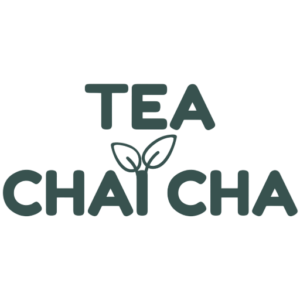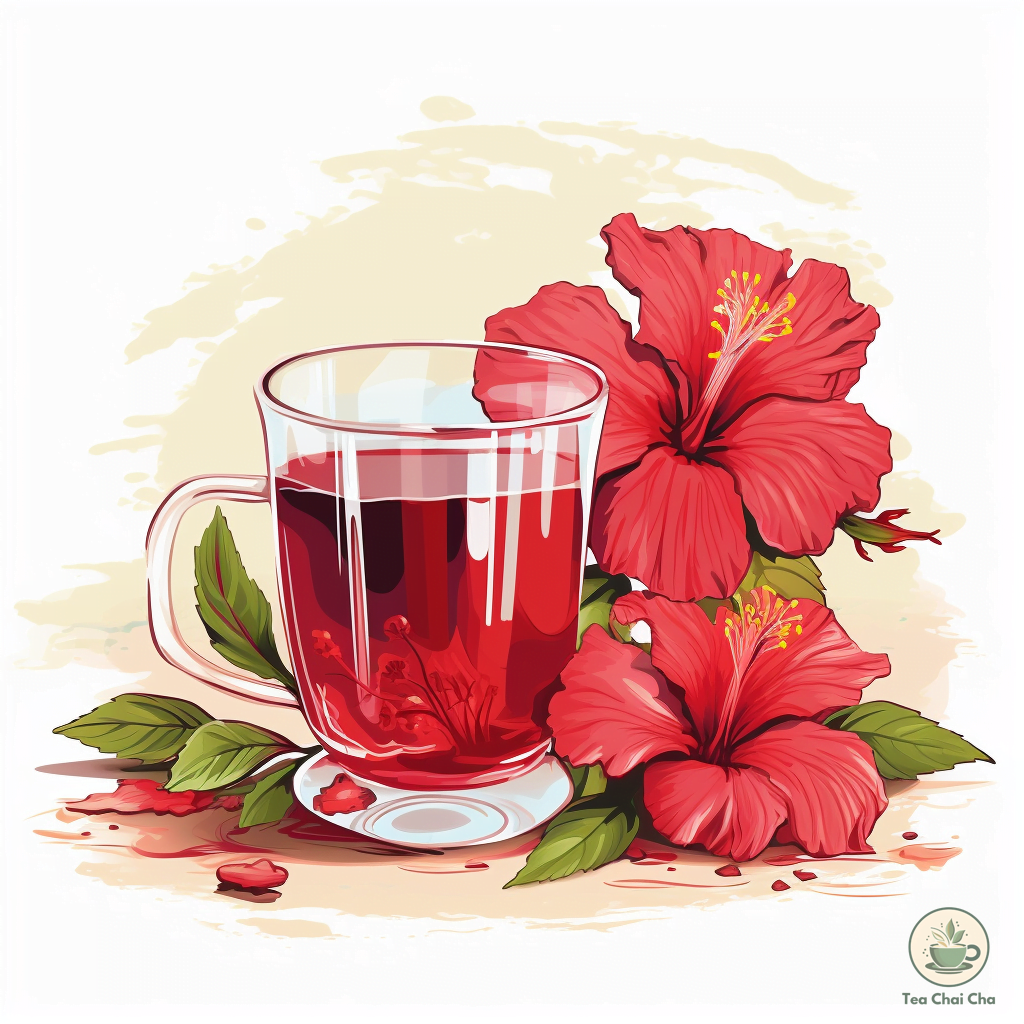I love making hibiscus tea (I mean who won’t), it’s a weekly ritual for me like many others in my country.
In winter, there’s nothing better than savoring it hot.
It instantly warms my soul with its ruby red goodness on those chilly, gray days.
But when summer hits, I crave it cold and iced.
On a sunny day, that bold, tangy flavor is more than a burst of refreshment.
Soon you’ll have my trusty hibiscus tea recipe.
It’s a breeze to whip up, only two ingredients, and less than 10 minutes of hands-on time.
And let me tell you, it’s not just tasty; it’s got some awesome health perks too.
Isn’t it enough chit-chat? Let’s get to it!
What Is Hibiscus?
Hibiscus is a beautiful flower that I’ve come to love.
It’s found in many parts of the world, especially in tropical and subtropical regions.
It originally comes from Central and West Africa but is now grown and enjoyed all over the world.
These flowers can be big and vibrant, with petals ranging from red and pink to yellow and even white.
The part of the hibiscus that’s edible and commonly used is the calyx and flower petals.
These are what you use to make tasty things like teas, jams, and syrups.
You can find different types of hibiscus, but the one I use for tea is often called “Hibiscus sabdariffa” or Roselle.
Its petals have a tangy, fruity flavor that’s perfect for making tea.
Hibiscus goes by various names around the world.
In some places, it’s known as “sorrel” or “rosella.”
In the Caribbean, they use dried roselle flowers to make something called Jamaican sorrel drink.
It’s a sweet hibiscus drink with a kick of ginger, cloves, and allspice.
And in Mexico, those same dried hibiscus flowers turn into agua de Jamaica, a super refreshing hibiscus agua fresca.
People also call it “karkade” in Egypt and Sudan.
It’s quite interesting how the same flower has different names depending on where you are.
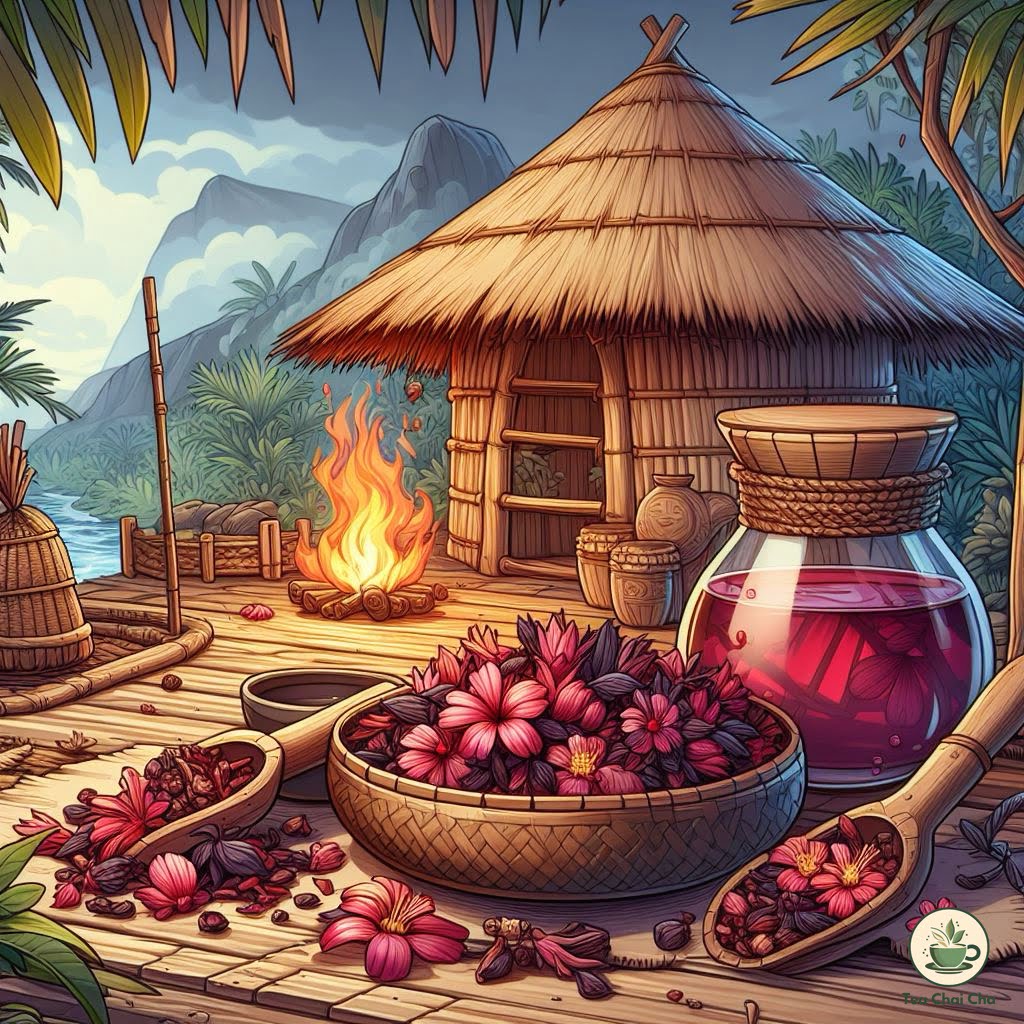
What Is Hibiscus Tea?
Hibiscus tea is a tisane/herbal tea made from hibiscus flowers, specifically the red and pink parts called calyces from the roselle plant.
You can have it hot or iced, and it’s been enjoyed for ages.
It’s got a fruity and tart taste, and the color of tea is beautiful red or purple.
Besides making tasty tea, hibiscus has many other uses.
Some people use it in cooking to add a unique twist to their dishes.
It’s also used in traditional medicine for its potential health benefits, like helping with high blood pressure.
Plus, hibiscus flowers are often used to make colorful dyes and cosmetics.
7 Benefits of Hibiscus Tea
Hibiscus tea, made from the hibiscus sabdariffa plant, can be really good for your health.
If you’re like me and enjoy this tea often, you might have noticed some positive effects.
Here’s what you will get by drinking this ruby tea:
1. Rich in Antioxidants
Hibiscus tea is full of antioxidants, like anthocyanins and quercetin.
These antioxidants help fight harmful stuff in your body.
It is great for keeping your cells healthy and lowering your chances of getting sick.
2. Heart Health Support
Drinking hibiscus tea might make your heart happy.
It’s been linked to lowering your blood pressure, which is good news for your heart health.
Plus, those anthocyanins in hibiscus tea can help improve your cholesterol levels.
3. Weight Management
If you’re trying to watch your weight, hibiscus tea can be your friend.
It can help you lose weight by blocking carbs from piling up and making you feel less hungry.
4. Kidney Health
Hibiscus tea seems to be good for your kidneys.
It could help stop kidney stones from forming by reducing the stuff that causes them.
5. Digestive Health
In my experience, hibiscus tea is gentle on your tummy.
It’s got some mild diuretic powers and can help with constipation, thanks to its fiber.
6. Rich in Vitamin C
If you’re into getting your vitamins, hibiscus tea is a good choice.
It’s rich in vitamin C, which is super important for your immune system, skin, and overall health.
7. Potential Blood Sugar Control
Recent research hints that hibiscus tea might help control your blood sugar levels.
This could be really useful if you have type 2 diabetes or are worried about getting it.
Side Effects of Hibiscus Tea
Hibiscus is generally considered safe when consumed in moderation.
But like many things, it’s essential to be aware of potential side effects.
Here’s what you should know:
Gastrointestinal Distress
Some individuals might experience gastrointestinal discomfort after drinking hibiscus tea.
This can manifest as an upset stomach, gas, or diarrhea.
It’s more likely to occur when you consume excessive amounts of hibiscus tea, so moderation is key.
Low Blood Pressure
One of the significant effects of hibiscus is its potential to lower blood pressure.
While this can be beneficial for individuals with hypertension, it may lead to excessively low blood pressure in some people, causing dizziness or lightheadedness.
Interaction with Medications
Hibiscus can interact with certain medications, including antihypertensive drugs and diuretics.
If you’re taking medication for blood pressure or any other condition, it’s better to talk with a healthcare professional first.
Allergic Reactions
Although rare, some individuals may be allergic to hibiscus.
Allergic reactions can vary from mild skin rashes to more severe symptoms like difficulty breathing or swelling.
Seek medical attention immediately if you suspect an allergy.
Pregnancy and Fertility
Pregnant or nursing women and those trying to conceive should consume hibiscus cautiously.
There’s limited research on its effects during pregnancy.
So it’s best to consult a healthcare provider before including it in your diet.
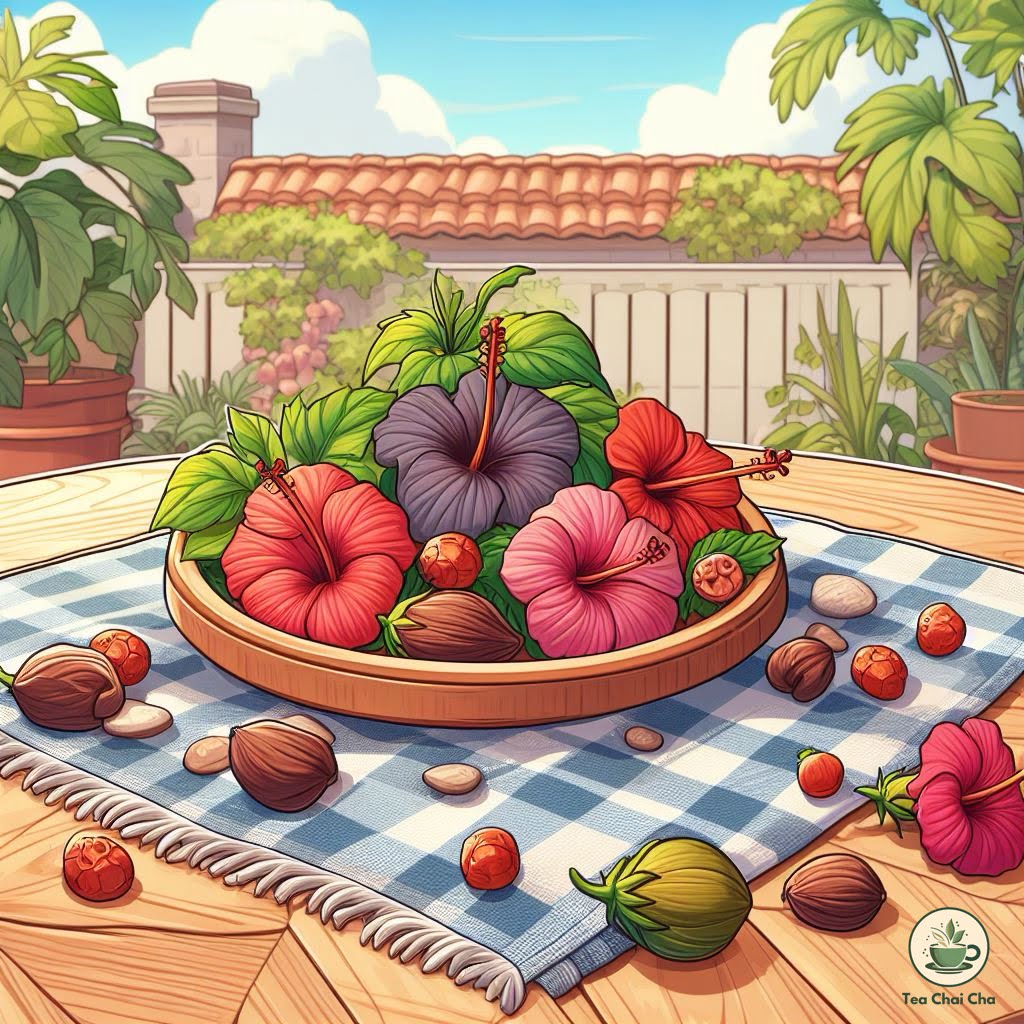
What You Need to Make Hibiscus Tea
When it comes to making hibiscus tea, simplicity is the name of the game.
Here’s what you’ll need to get started:
1. Hibiscus Flowers (Dried)
Dried hibiscus flowers give the tea its vibrant color and tangy flavor.
You can find them at many grocery stores or online.
Just a handful of these little petals will do the trick.
2. Water
You’ll need this to bring your hibiscus tea to life.
Whether you’re making it hot or cold, water is the base of your brew.
Make sure it’s clean and fresh.
3. Optional Sweeteners
This part is up to you.
Some people like their hibiscus tea a bit sweet.
You can add honey, sugar, or any sweetener you prefer.
If you want to keep it simple, you can skip this step and enjoy the natural tartness of the hibiscus.
4. Lemon (Optional)
If you want to kick up the flavor, a squeeze of fresh lemon juice can work wonders.
It adds a zesty twist that pairs wonderfully with hibiscus’s fruity notes.
Hibiscus Tea Brewing Notes
Here’s the steeping temperature and time for your hibiscus tea.
| Hibiscus Tea | Hibiscus Tea Brewing Temperature | Hibiscus Tea Steeping Time |
| Hot Hibiscus Tea | 200°F (93°C) | 5-7 minutes |
| Cold Brew Hibiscus Tea | Cold or Room Temperature | 2-4 hours |
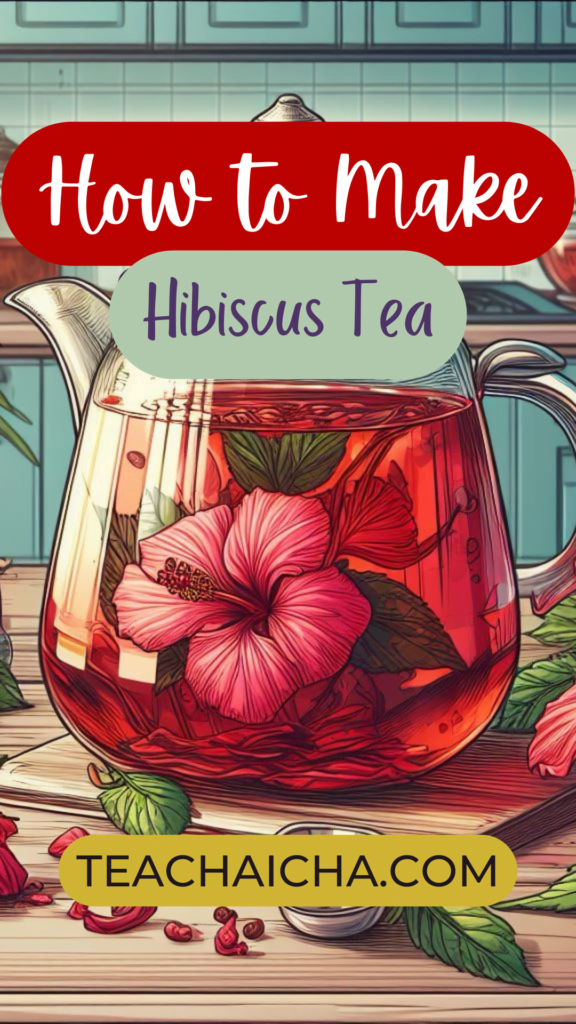
How to Make Hibiscus Tea from Fresh Hibiscus Flowers
If you’re lucky enough to have fresh hibiscus flowers on hand, making tea is a real treat.
Here’s a step-by-step guide for one serving:
Ingredients
- 2-3 fresh hibiscus flowers
- 1 cup of water
- Optional: sweetener (honey, sugar) to taste
- Optional: a squeeze of fresh lemon juice
Step 1: Harvest the Hibiscus Flowers
Go out to your garden or find a place where fresh hibiscus flowers are blooming.
Choose 2-3 vibrant, healthy flowers.
Make sure they haven’t been treated with any chemicals.
Step 2: Prepare the Flowers
Gently pluck the petals from the hibiscus flowers.
Discard the center part (the calyx) and any green bits.
You want the petals only; they’ll give your tea its flavor and color.
Step 3: Boil the Water
In a pot, bring one cup of water to a boil.
You can use a stovetop or an electric kettle—whatever you have handy.
Step 4: Add the Hibiscus Petals
Once the water is boiling, toss in your fresh hibiscus petals.
Give them a little stir to make sure they’re fully submerged.
Step 5: Let It Steep
Turn off the heat and cover the pot.
Let the hibiscus petals steep in the hot water for about 5-10 minutes.
This allows the flavors to infuse.
Step 6: Strain and Sweeten (Optional)
After steeping, strain out the petals so you’re left with the hibiscus tea.
If you like your tea sweet, add honey, sugar, or your preferred sweetener to taste.
You can also squeeze in some fresh lemon juice for a zesty twist.
Step 7: Enjoy Your Fresh Hibiscus Tea
Pour your homemade hibiscus tea into a cup, find a cozy spot, and savor the vibrant flavors of your freshly brewed creation.
It’s a simple, refreshing treat straight from your garden to your cup. Enjoy!
Scroll to the bottom to have complete recipe with ingredients and instructions.
How to Make Hibiscus Tea from Dried Flowers
Hibiscus tea is refreshingly simple to make, and you can enjoy it hot or cold.
Here’s a step-by-step guide to brewing your perfect cup.
Ingredients You’ll Need (1 serving)
- 1 tablespoon of dried hibiscus flowers
- 1 cups of water
- Optional sweetener (honey, sugar, or your choice)
- Optional fresh lemon juice
Step 1: Boil the Water
I start by bringing 1 cup of water to a boil.
You can use a kettle or a pot for this.
Once it’s bubbling away, we’re good to go.
Step 2: Add the Hibiscus Flowers
Take 1 tablespoon of dried hibiscus flowers and drop them into the boiling water.
Give it a gentle stir to make sure those petals get well acquainted with the hot water.
Step 3: Let It Simmer
Now, reduce the heat to low and let the hibiscus flowers simmer in the water for about 10-15 minutes.
You’ll notice the water turning this beautiful ruby red color – that’s what we want.
Step 4: Optional Sweetening
At this point, you can sweeten your tea if you like.
I add about 1-2 teaspoons of honey, but you can use sugar or your preferred sweetener.
Stir it until it dissolves completely.
Step 5: Strain the Tea
Once the tea is done steeping, it’s time to strain it.
I use a fine-mesh strainer or a tea infuser, but you can even use a simple kitchen sieve.
Pour the tea into your favorite cup or pitcher.
Step 6: Serve and Enjoy
If you want to enjoy your hibiscus tea hot, you’re ready to sip away.
If you prefer it cold, pop it in the fridge for a few hours or add some ice cubes.
For an extra zing, squeeze a bit of fresh lemon juice into your glass.
How to Dry Hibiscus Flowers for Tea
Drying hibiscus flowers for tea is a rewarding process, and it all starts with picking the right flowers at the right time.
Here’s a simple guide based on my experience:
Step 1: Choose the Right Hibiscus Variety
Not all hibiscus varieties are suitable for tea.
Look for the one known as “hibiscus sabdariffa” or “roselle.”
These are the types with the deep red calyces and petals that make the best tea.
Step 2: Pick Ripe Flowers
Wait until the hibiscus flowers are fully mature before plucking them.
You’ll know they’re ready when the petals start to curl back and the calyces are plump and fleshy.
This is usually when they turn a vibrant red color.
Step 3: Harvest with Care
When you’re ready to gather your hibiscus flowers, use clean, sharp scissors or pruning shears.
Snip the calyces (the bulbous part beneath the petals) from the stem, leaving a bit of the stem attached.
Be gentle to avoid damaging the plant.
Step 4: Remove Unwanted Parts
Once you’ve collected your hibiscus calyces, give them a good rinse under cold water to remove any dirt or insects.
Then, carefully remove any green bits or sepals that might still be attached.
You want only the deep red calyces.
Step 5: Choose Your Drying Method
Now, there are two common ways to dry hibiscus petals:
a) Sun Drying
Lay the petals out on a clean, dry surface, like a baking sheet or a mesh screen.
Put them in a sunny spot, preferably outside, where they can soak up the sun’s warmth.
It can take a few days to a week to fully dry them using this method, depending on the weather.
b) Oven Drying
If you want a quicker option, you can use your oven.
Preheat it to the lowest temperature possible (around 170°F or 76°C).
Spread the petals on a baking sheet and place them in the oven. Leave the oven door slightly ajar to let moisture escape.
Check them every 30 minutes or so until they are dry and crispy, which may take a few hours.
Step 6: Store Properly
Once your hibiscus calyces are thoroughly dry, store them in an airtight container in a cool, dark place.
This will keep them fresh and preserve their flavor for future tea-making adventures.
That’s it!
You’ve now got your own dried hibiscus petals ready to brew into delicious hibiscus tea whenever you want.
What to Do with Hibiscus Flowers after Making Tea
After making hibiscus tea, I don’t like to waste those used hibiscus flowers.
Here’s what I do with them:
1. Compost
If you’re into composting, used hibiscus flowers can be a great addition to your compost bin.
They’ll break down and add some nutrients to your compost, helping your garden thrive.
2. Fertilizer
You can also use the steeped hibiscus flowers directly as a natural fertilizer for your plants.
Just sprinkle them around the base of your garden plants to give them a little nutrient boost.
3. Cold Brew Round Two
If you’ve made iced hibiscus tea and still have some flavor left in those petals, you can give them a second life.
Add fresh cold water to the used flowers, let them steep in the fridge for a while, and you’ll have a milder, but still tasty, hibiscus infusion.
4. Make Hibiscus Syrup
I love making hibiscus syrup for cocktails and desserts.
Just simmer the used hibiscus flowers with equal parts sugar and water until it thickens into a syrupy consistency.
Strain it, and you’ve got a vibrant, floral syrup ready to enhance your drinks and sweets.
5. DIY Potpourri
Get creative and use the spent hibiscus flowers to make your own potpourri.
Mix them with dried citrus peels, lavender, or other fragrant herbs for a lovely, natural air freshener.
6. Homemade Face Mask
Hibiscus is known for its skin-friendly properties.
You can blend the used hibiscus flowers with some yogurt or honey to create a nourishing face mask.
It’s a natural way to pamper your skin.
7. Bath Soak
Sometimes, I like to use the used hibiscus flowers for a relaxing bath.
Toss them into a warm bath for a fragrant and soothing soak. It’s a lovely way to unwind.
So, don’t toss those hibiscus flowers away after making tea.
Give one of these ideas a try and make the most of their potential even after they’ve flavored your delicious brew.
Hibiscus Tea Hot or Cold?
When it comes to hibiscus tea, you’ve got options: hot or cold.
And let me tell you, they offer slightly different taste experiences.
Hot Hibiscus Tea
Taste
Hot hibiscus tea has a deep, rich flavor.
The warmth seems to bring out the hibiscus’s natural tartness and fruity notes, making it slightly more intense in taste.
Traditionally Enjoyed
In many places, hot hibiscus tea is a comforting drink during cold seasons.
It warms you up from the inside and is often sipped plain or with a touch of honey for sweetness.
Benefits
Hot hibiscus tea is believed to be good for digestion and is often enjoyed after meals in some cultures.
Some people also find it soothing for sore throats.
Cold Hibiscus Tea
Taste
Cold hibiscus tea is like a burst of refreshment on a hot day.
It’s tangy, fruity, and incredibly thirst-quenching.
The coldness seems to mellow out the tartness a bit, making it a tad more mellow.
Traditionally Enjoyed
In warm climates, cold hibiscus tea is a go-to drink to beat the heat.
It’s often served over ice and can be sweetened to taste.
It’s fantastic for staying cool and hydrated.
Benefits
Cold hibiscus tea is known for its potential to help lower blood pressure and is loaded with antioxidants.
It’s a popular choice for a healthy, chilled beverage.

How to Make Hibiscus Iced Tea
When the sun’s blazing, there’s nothing like a glass of refreshing hibiscus iced tea to keep you cool.
Here, I’ll walk you through two easy methods: cold brew hibiscus tea and quick iced hibiscus tea.
Cold Brew Hibiscus Tea
Ingredients
- 1/2 cup dried hibiscus flowers
- 4 cups cold water
- Optional: sweetener of your choice (honey, sugar, etc.)
- Optional: lemon wedges for a zesty kick
Step 1: Combine the dried hibiscus flowers and cold water in a pitcher or jar.
Step 2: Give it a good stir, cover, and place it in the fridge.
Let it steep for about 4-6 hours, or even overnight for a stronger flavor.
Step 3: Once it’s ready, strain out the hibiscus flowers.
You’ll be left with a vibrant, crimson liquid.
Step 4: Sweeten to your taste. Start with a couple of tablespoons of your chosen sweetener, and adjust as needed.
If you like it zesty, squeeze in some fresh lemon juice.
Step 5: Fill your glass with ice cubes and pour the cold brew hibiscus tea over it.
Garnish with a lemon wedge if you like, and enjoy!
Quick Iced Hibiscus Tea
Ingredients
- 1/4 cup dried hibiscus flowers
- 2 cups boiling water
- Ice cubes
- Sweetener (optional)
Step 1: Place the dried hibiscus flowers in a heatproof container or teapot.
Step 2: Pour the boiling water over the hibiscus flowers.
Step 3: Let it steep for about 10-15 minutes, depending on how strong you like it.
The longer it steeps, the more intense the flavor will be.
Step 4: Once steeped to your liking, strain the tea to remove the hibiscus flowers.
Step 5: Let the tea cool for a bit, then transfer it to the fridge to chill further.
Step 6: When you’re ready to enjoy, fill a glass with ice cubes, pour the hibiscus tea over the ice, and sweeten if desired.
6 Factors That Affect the Flavor of Hibiscus Tea
When it comes to hibiscus tea, there are a few things that can influence its flavor.
Here’s a breakdown to help you get the taste you desire:
1. Hibiscus to Water Ratio
More Hibiscus: If you want a stronger, more intense flavor, use a bit more dried hibiscus flowers per cup.
This gives your tea a bolder tang.
Less Hibiscus: For a milder taste, go easy on the hibiscus. It’ll be less tart and more subtle.
2. Steeping Time
Longer Steep: Leaving your hibiscus to steep for a longer time, say 10-15 minutes, brings out a deeper flavor and color.
It can get quite robust and tangy.
Shorter Steep: If you prefer a lighter brew, steep for just 5-7 minutes. It’ll be less intense and more refreshing.
3. Sweeteners
Sweeten Up: Adding honey, sugar, or your favorite sweetener can balance out hibiscus’s tartness, making it sweeter and more enjoyable for some.
Keep It Natural: Skipping sweeteners lets you savor the pure, tart hibiscus taste.
4. Lemon Juice (Optional)
With Lemon: A squeeze of fresh lemon juice brightens up the flavor, giving it a zesty, citrusy kick.
Without Lemon: If you prefer to keep it simple, skip the lemon for a more straightforward hibiscus taste.
5. Mixing with Other Ingredients
Spices: Some like to spice things up with ingredients like ginger, cloves, or cinnamon.
These can add unique and exciting dimensions to your hibiscus tea.
Fruits: Slices of fresh fruits like oranges or berries can complement the hibiscus flavor with a fruity twist.
6. Brewing Vessel
Teapot: Brewing in a teapot might give you a more refined taste, as the hibiscus petals have more space to infuse the water evenly.
Mason Jar: For cold brewing, a mason jar is a convenient choice. It’s easy to shake and store in the fridge.
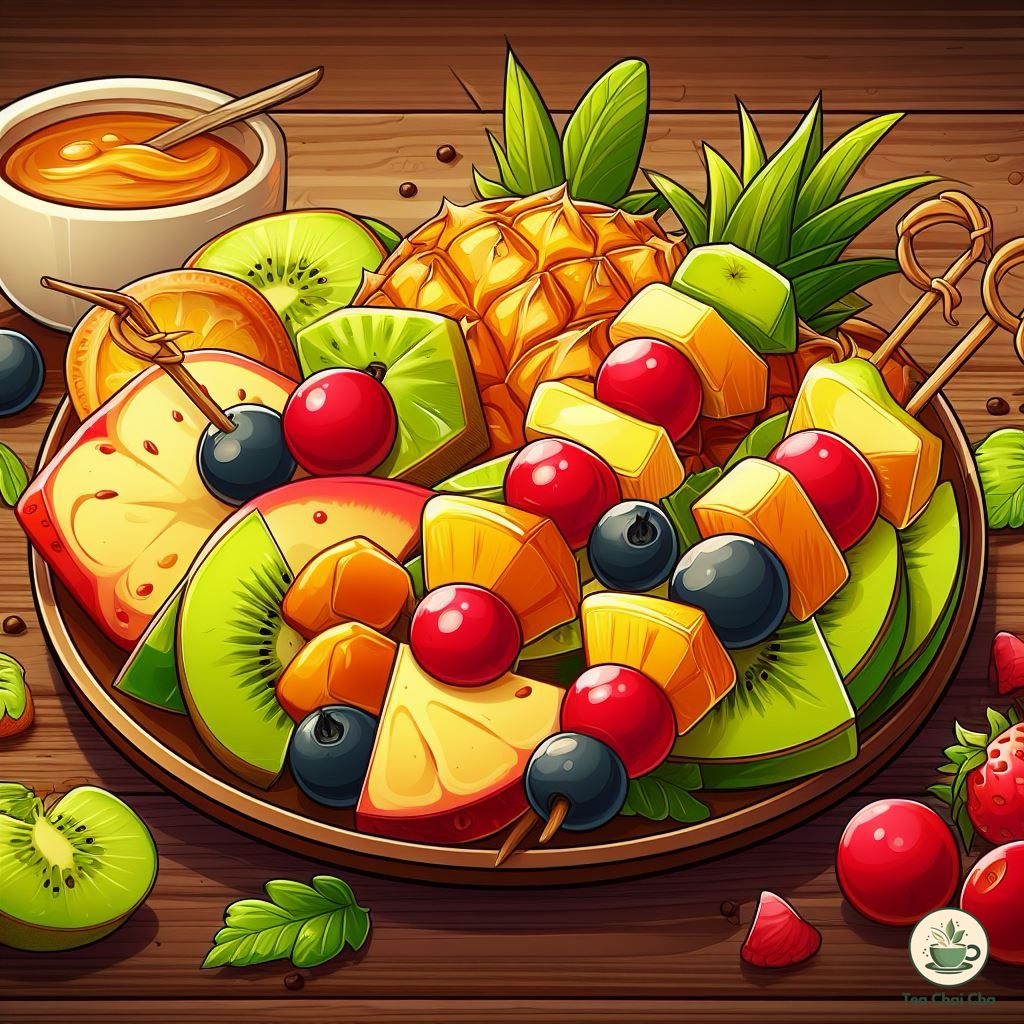
How to Make Hibiscus Tea Taste Better
If you want to elevate your hibiscus tea experience, here are some unique and practical tips to enhance its flavor:
1. Experiment with Sweeteners
Try different sweeteners to find your perfect match.
Honey, agave syrup, or stevia can add a touch of sweetness without overpowering the hibiscus’s natural tanginess.
Adjust the amount to suit your taste.
2. Add Fresh Fruit
Improve your hibiscus tea by tossing in slices of fresh fruit like oranges, strawberries, or even pineapple.
They not only infuse delightful flavors but also bring a hint of natural sweetness.
3. Mix in Spices
Spices can work wonders.
Add a cinnamon stick, a few cloves, or a slice of ginger while steeping your hibiscus tea.
These spices complement the hibiscus’s tartness and add depth to the flavor.
4. Chill with Ice and Mint
For a refreshing twist, turn your hibiscus tea into a cold brew.
Fill a glass with ice, pour in your hibiscus tea, and garnish with fresh mint leaves.
5. Blend with Other Teas
Get creative by blending hibiscus tea with other herbal teas like mint, chamomile, or lavender.
The combinations can yield unique flavors.
6. Citrus Zest
Grate some citrus zest, like lemon or orange, into your hibiscus tea.
The oils from the zest add a burst of citrusy aroma and flavor without the acidity of the juice.
7. Experiment with Carbonation
For a fizzy twist, mix your hibiscus tea with sparkling water.
It’s a fantastic alternative to soda and gives your tea a bubbly, refreshing kick.
8. Infuse with Herbs
Fresh herbs like basil, rosemary, or thyme can provide an aromatic and savory dimension to your hibiscus tea.
Just remember, a little goes a long way.
9. Try Floral Additions
Edible flowers like lavender or rose petals can lend a delicate floral note to your hibiscus tea.
It’s a lovely touch for a special occasion.
10. Play with Ratios
Adjust the ratio of hibiscus flowers to water to find your preferred strength.
More flowers will make it bolder and tangier, while less will mellow it out.
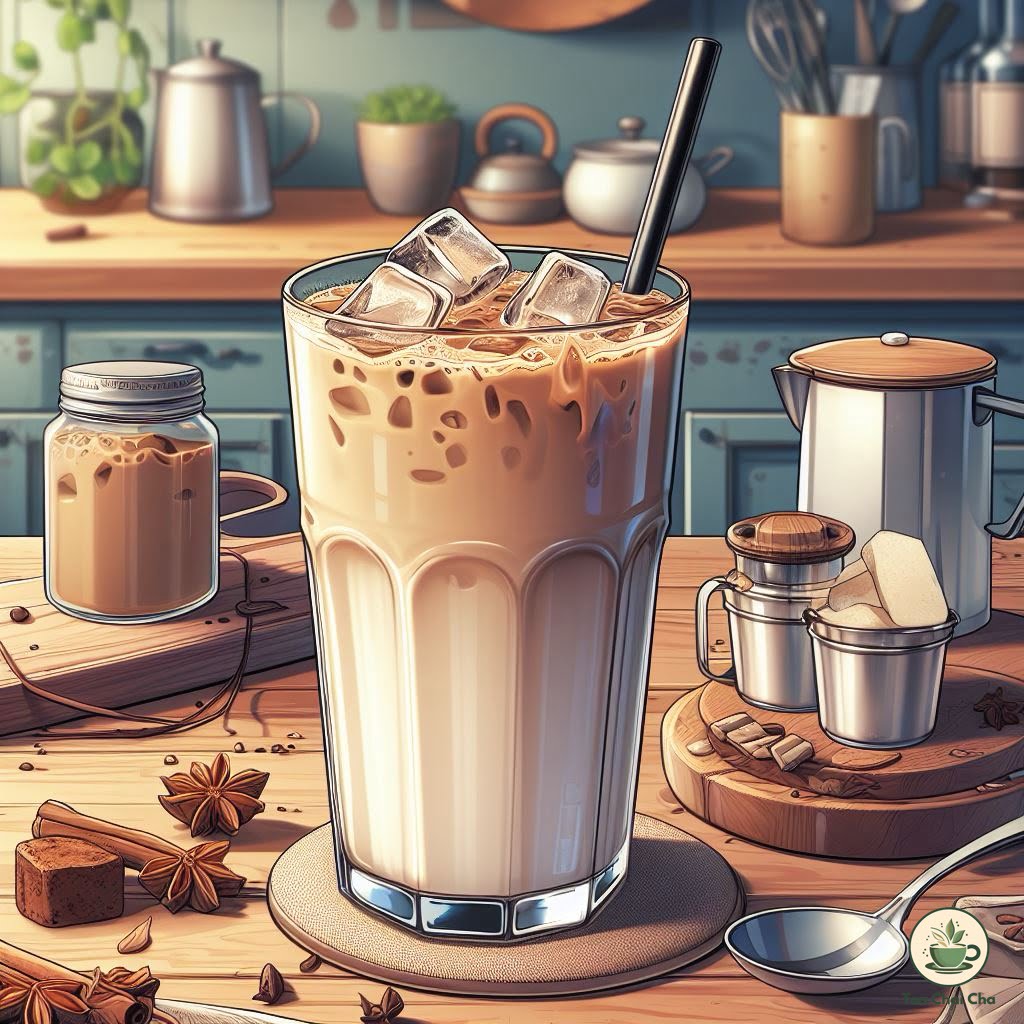
4 Hibiscus Tea Variations
If you’re looking to switch things up with your hibiscus tea, there are some fantastic variations to explore.
Let me walk you through a few:
1. Hibiscus Tea Latte
This one’s for those who enjoy a creamy twist to their tea.
To make a hibiscus tea latte, brew your hibiscus tea as usual, then add warm, frothy milk of your choice.
It creates a soothing and slightly floral beverage that’s perfect for cozy evenings.
2. Hibiscus Tea Blend
Get creative with your tea by mixing hibiscus with other herbal teas or spices.
I often blend hibiscus with mint leaves for a refreshing kick.
Feel free to experiment with flavors until you find your perfect blend.
3. Hibiscus Tea Sangria
For a vibrant and fruity concoction, try making hibiscus tea sangria.
Brew a strong batch of hibiscus tea and let it cool.
Then add some chopped fruits like oranges, apples, and berries, a touch of sweetener, and a splash of your favorite wine or sparkling water.
It’s a delightful, party-ready beverage.
4. Hibiscus Tea with Spices
Spices can take your hibiscus tea to a whole new level.
Add a cinnamon stick, a few cloves, or even some ginger slices to your tea while it’s brewing.
Some of the countries where this tea is commonly consumed include:
Mexico: In Mexico, hibiscus tea (agua de Jamaica) often includes spices like cinnamon and sometimes cloves.
It’s a popular and refreshing drink, especially during warm weather.
Egypt: In Egypt, a drink called “karkadeh” is made from dried hibiscus petals and can include spices like ginger and sometimes cinnamon.
It’s a traditional beverage often served hot or cold.
West Africa: In countries like Nigeria and Senegal, hibiscus tea is known as “bissap” or “sobolo.”
It’s often flavored with spices like ginger and sometimes cloves or even mint leaves.
Middle Eastern and North African countries: Spiced hibiscus tea is also enjoyed in various Middle Eastern and North African nations.
You might find it seasoned with ingredients like cinnamon, ginger, and cloves.
Caribbean: While not always with spices, hibiscus tea variations are common in the Caribbean.
For instance, Jamaican sorrel drink often includes spices like cloves and allspice, giving it a unique and flavorful twist.
India: In some parts of India, hibiscus tea is infused with spices like cardamom, cinnamon, and cloves.
It adds a delightful Indian flair to the beverage.
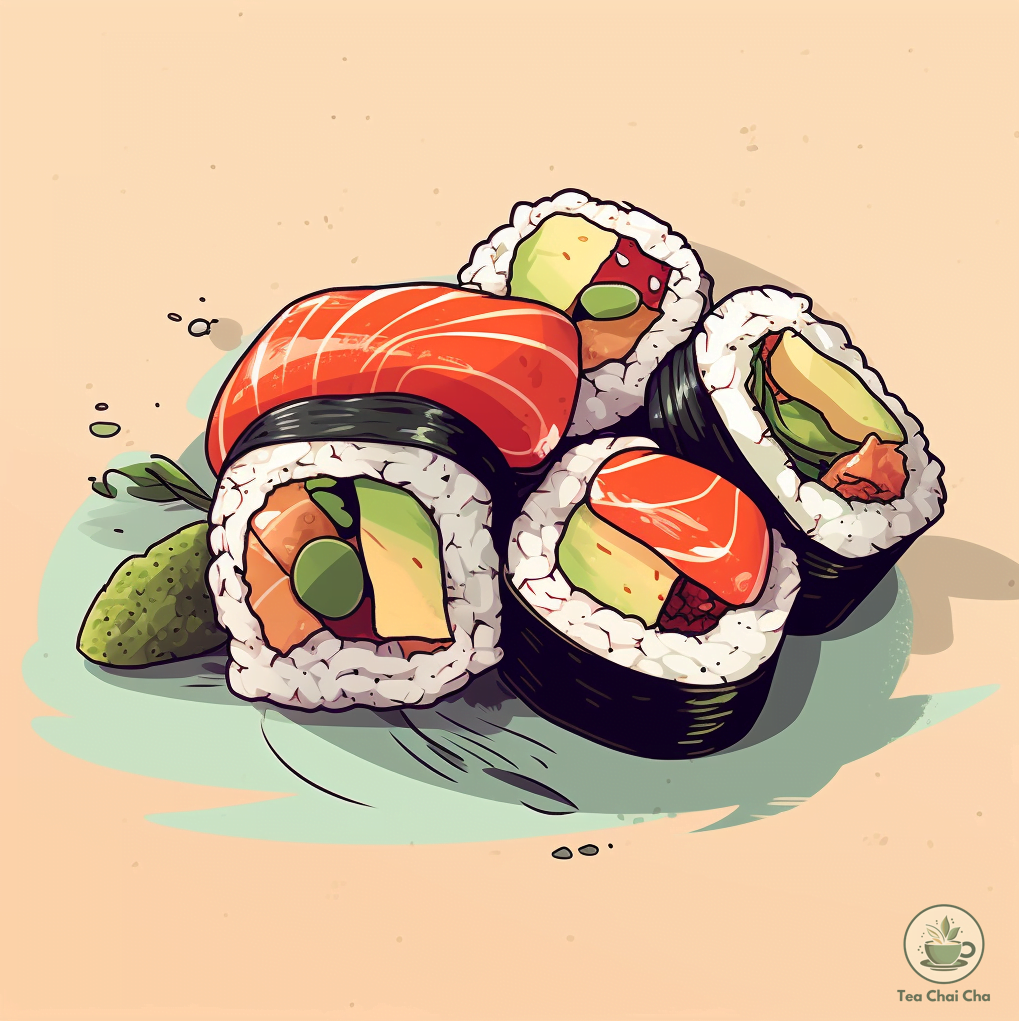
Food Pairing with Hibiscus Tea
Hibiscus tea is not just a standalone delight; it pairs wonderfully with a variety of foods, both sweet and savory.
Here are some recommendations to enhance your hibiscus tea experience:
Desserts
Fruit Salad: A refreshing fruit salad with a mix of tropical fruits like pineapple, mango, and kiwi complements the fruity notes in hibiscus tea.
Cheesecake: Creamy cheesecake, whether plain or fruit-topped, contrasts beautifully with the tartness of tea.
Shortbread Cookies: The buttery richness of shortbread cookies makes them a delightful match for hibiscus tea’s bright flavors.
Meals
Grilled Chicken Salad: A light and healthy grilled chicken salad with a citrus vinaigrette dressing pairs well with the zesty profile of tea.
Spicy Thai or Mexican Cuisine: Hibiscus tea can help cool down the heat in spicy dishes. Thus, making it a great sidekick to Thai curries or Mexican tacos.
Vegetarian Stir-Fry: The herbal notes of hibiscus tea complement the earthy flavors of a vegetable stir-fry, creating a balanced meal.
My Favs!
Sushi: The clean flavors of sushi, especially with a touch of wasabi and soy sauce, harmonize with hibiscus tea’s crispness.
Chocolate: Dark chocolate with its deep, complex flavors can be a delightful contrast to the brightness of hibiscus tea.
Grilled Seafood: Grilled fish or shrimp seasoned with herbs and a squeeze of lemon pairs beautifully with hibiscus tea.
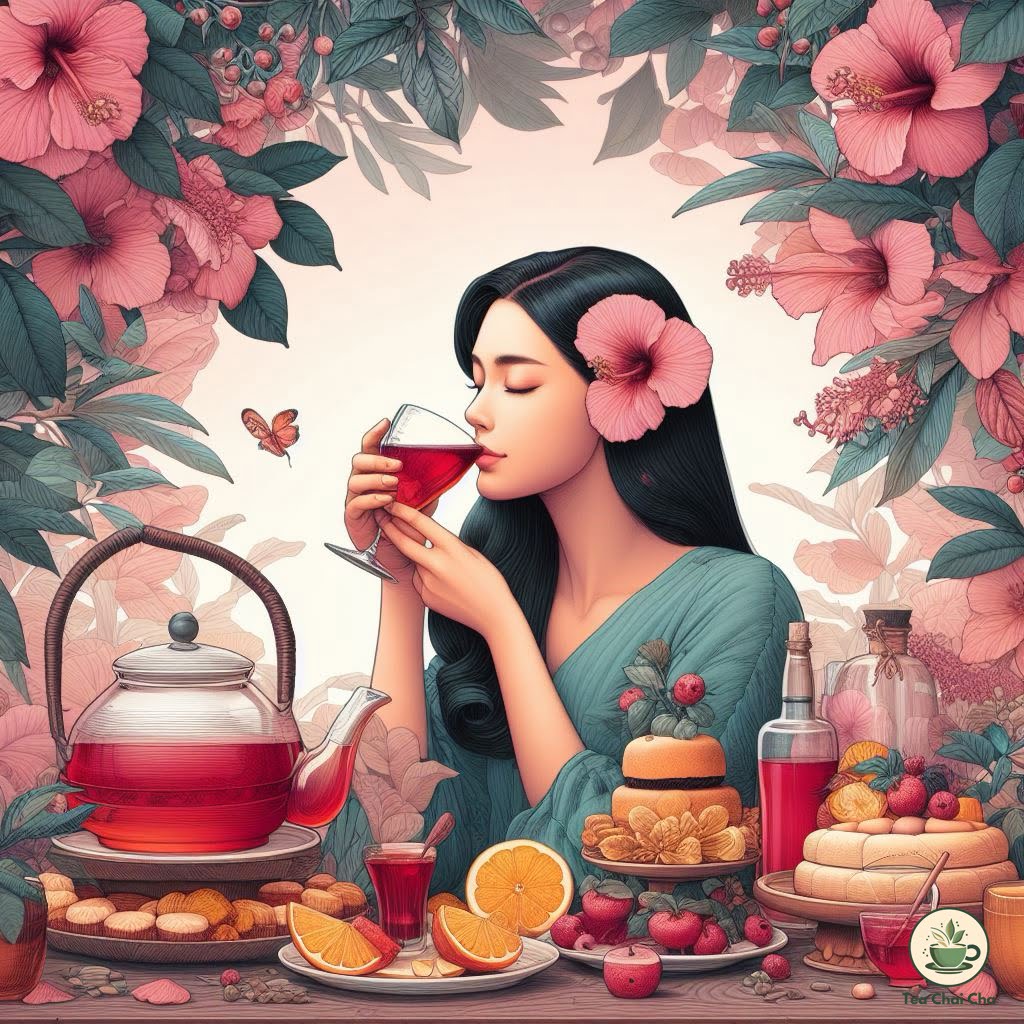
When to Drink Hibiscus Tea
I’ve found that hibiscus tea is pretty versatile, and you can enjoy it at different times for various benefits.
Here are a few options to consider:
1. Morning Wake-Up Call
Start your day with a burst of flavor and energy.
Hibiscus tea is a zesty alternative to your usual morning coffee or black tea.
It’s a great way to start your day with a refreshing twist.
2. Afternoon Pick-Me-Up
Instead of reaching for sugary snacks, opt for a cup of iced hibiscus tea.
Its natural tartness can awaken your senses and keep you going without the sugar crash.
3. Post-Workout Hydration
After a good workout, rehydrate with cold hibiscus tea.
It’s not just thirst-quenching; it’s packed with antioxidants that can help your body recover.
4. Evening Relaxation
As the sun sets, wind down with a warm mug of hibiscus tea.
Its calming qualities can help you relax and prepare for a peaceful night’s sleep.
5. Social Sipper
Hosting friends or family? Surprise them with a pitcher of chilled hibiscus tea.
Add some fresh fruits and a splash of sparkling water for a delightful and healthy mocktail.
6. Seasonal Delight
Change it up with the seasons.
Enjoy it hot during the winter to warm your soul, and keep it iced during the summer for a burst of cool refreshment.
Related to Tea Making
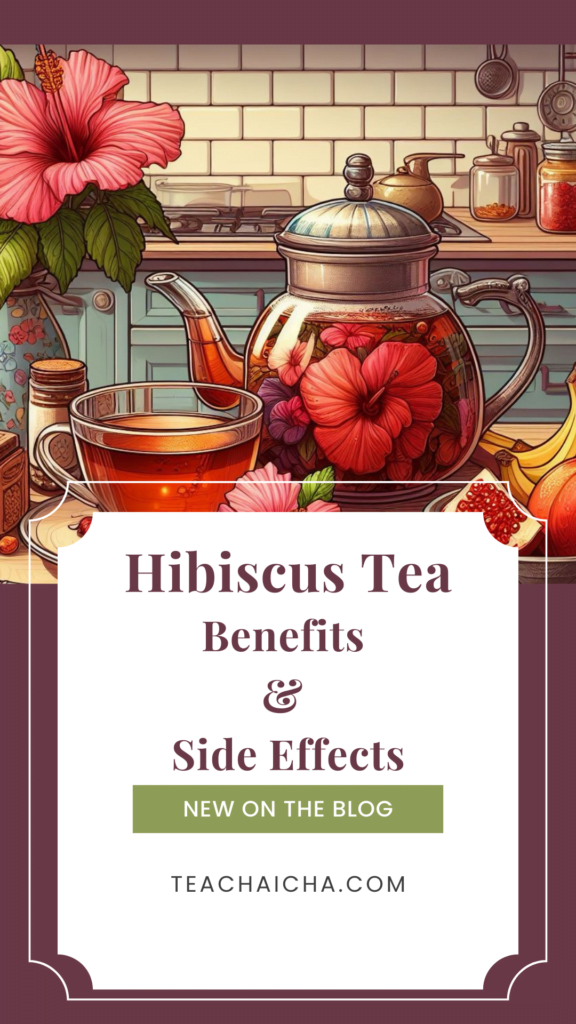
Hibiscus Tea Recipe Hot (Agua de Jamaica)
Recipe by Tania FaysalCourse: DrinksCuisine: American, Middle Eastern, African1
servings2
minutes7
minutes5
kcal9
minutesEnjoy the vibrant, tangy sweetness of homemade hibiscus tea - serves 2 for a refreshing break.
Ingredients
1 cup of water (8 ounces or 240 ml)
2 teaspoons of dried hibiscus petals or 1 hibiscus tea bag
1-2 teaspoons of honey or sugar (optional, to taste)
A slice of lemon or a few fresh mint leaves (optional, for garnish)
Directions
- Boil the Water: Place the water in a kettle or saucepan and bring it to a boil. It should be 200°F (93°C).
- Add Hibiscus Petals or Tea Bag: If using loose hibiscus petals, place them in a teapot or heatproof cup. If using a tea bag, put it directly in your cup.
- Pour Hot Water: Once the water reaches a boil, carefully pour it over the hibiscus petals or tea bag.
- Steep the Tea: Let the hibiscus steep in the hot water for about 5-7 minutes, or until the tea reaches your desired strength. The longer you steep it, the stronger and tangier it will become.
- Sweeten to Taste (Optional): If desired, add 1-2 teaspoons of honey or sugar to sweeten your tea. Stir until it dissolves.
- Garnish (Optional): You can add a slice of lemon or a few fresh mint leaves for extra flavor and a lovely aroma.
- Serve and Enjoy: Carefully remove the tea bag or strain the hibiscus petals if necessary. Pour your hot hibiscus tea into a cup, and savor the fruity, tart goodness.
Recipe Video
Notes
- Storing Brewed Tea: If you have leftover brewed hibiscus tea, let it cool to room temperature and then refrigerate it in a sealed container for up to 2-3 days. You can enjoy it cold or reheat it gently on the stove or in the microwave.
- Variations: Experiment with flavors by adding spices like cinnamon or cloves during steeping. You can also blend in a bit of orange juice for a citrus twist.
Frequently Asked Questions (FAQs)
What does hibiscus tea taste like?
Hibiscus tea taste is tangy, tart, and a bit sour, similar to cranberry juice but with floral undertones.
The taste can vary slightly depending on how it’s prepared and whether you add sweeteners or other ingredients.
Does hibiscus tea have caffeine?
No, hibiscus tea is naturally caffeine-free. It’s a great choice for those looking to avoid caffeine but still want a flavorful beverage.
Is hibiscus tea a real tea?
No, hibiscus tea is not a true tea because it doesn’t come from the Camellia sinensis plant. Hibiscus tea is an herbal infusion made from the hibiscus flower.
How many calories are in hibiscus tea?
Hibiscus tea is very low in calories. An 8-ounce (240 ml) cup typically contains around 0-5 calories, depending on whether you add sweeteners or other additives.
How to make 1 cup of hibiscus tea?
To make a single cup of hibiscus tea, you’ll need about 1-2 teaspoons of dried hibiscus petals.
Steep them in 8 ounces (240 ml) of hot water for 5-7 minutes. You can adjust the steeping time to achieve your preferred level of tartness.
Is it OK to drink hibiscus tea daily?
Drinking hibiscus tea daily is generally safe for most people and can offer health benefits. However, some individuals may experience low blood pressure.
So it’s essential to monitor your body’s response. If you have concerns or are pregnant, it’s a good idea to consult with a healthcare professional.
How to make hibiscus tea for high blood pressure?
Hibiscus tea may help lower blood pressure. To make it, use dried hibiscus petals and steep them in hot water.
Aim for 2-3 cups daily, but consult a healthcare provider for personalized guidance if you have high blood pressure or are taking medication.
How to make hibiscus tea for weight loss?
Hibiscus tea is believed to support weight loss due to its potential to aid digestion and boost metabolism.
To make it, brew hibiscus tea without sweeteners and enjoy it as part of a balanced diet and exercise regimen for potential weight management benefits.
How much hibiscus tea per cup?
For a standard cup of hibiscus tea, use 1-2 teaspoons of dried hibiscus petals. Adjust the amount based on your taste preferences, but avoid over-packing the cup to prevent bitterness.
Is homemade hibiscus tea good for you?
Homemade hibiscus tea is a healthy choice. It’s rich in antioxidants, may support heart health, and can be a part of a balanced diet. Just be mindful of added sugars if you’re looking to keep it low in calories.
Can I take hibiscus tea on an empty stomach?
Yes, you can enjoy hibiscus tea on an empty stomach. In fact, some people find it helpful for digestion.
However, if you have concerns or experience discomfort, consider having it with a light meal instead. Listen to your body’s response.
